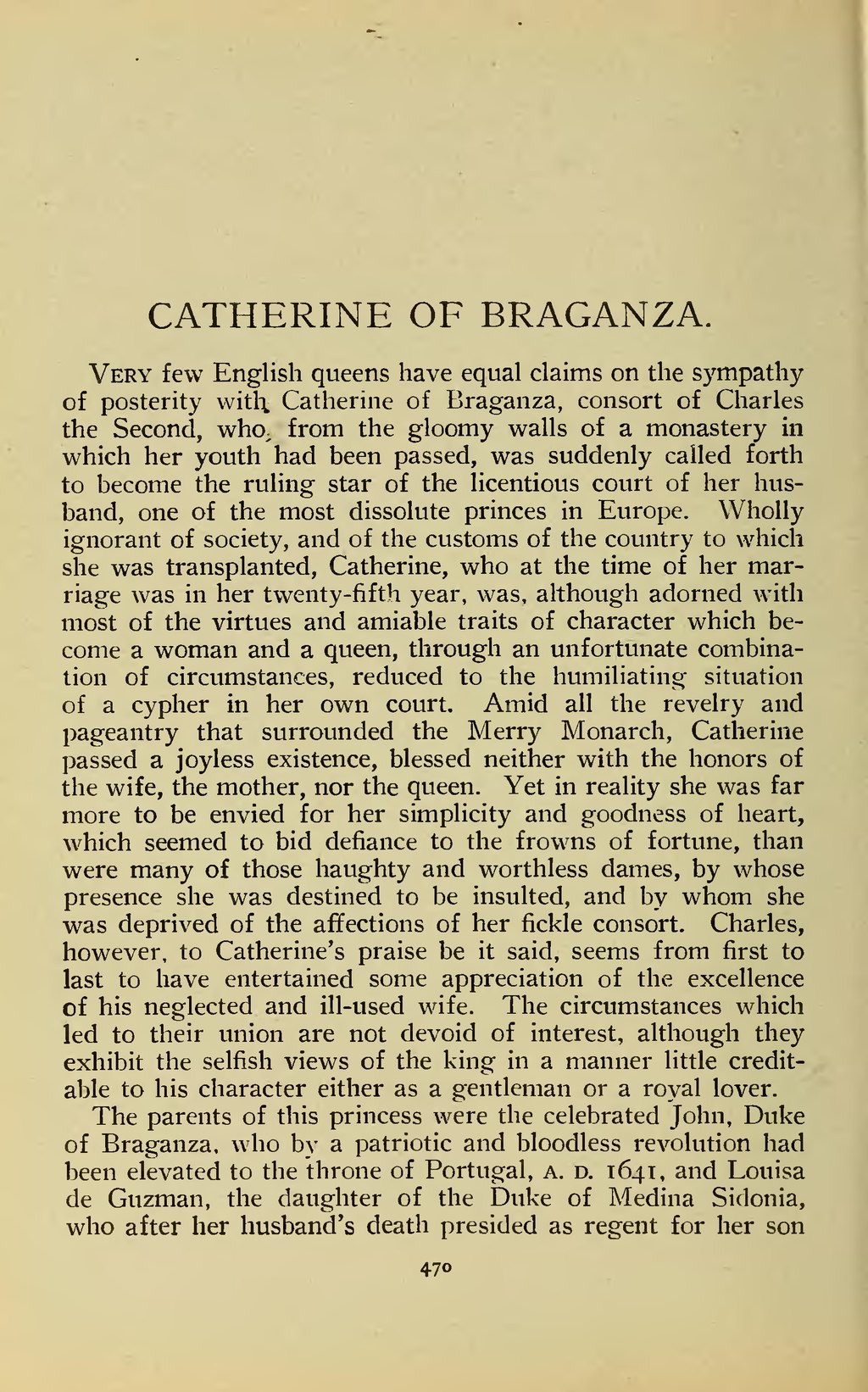CATHERINE OF BRAGANZA. Very few English queens have equal claims on the sympathy of posterity with, Catherine of Braganza, consort of Charles the Second, who ; from the gloomy walls of a monastery in which her youth had been passed, was suddenly called forth to become the ruling star of the licentious court of her hus- band, one of the most dissolute princes in Europe. Wholly ignorant of society, and of the customs of the country to which she was transplanted, Catherine, who at the time of her mar- riage was in her twenty-fifth year, was, although adorned with most of the virtues and amiable traits of character which be- come a woman and a queen, through an unfortunate combina- tion of circumstances, reduced to the humiliating situation of a cypher in her own court. Amid all the revelry and pageantry that surrounded the Merry Monarch, Catherine passed a joyless existence, blessed neither with the honors of the wife, the mother, nor the queen. Yet in reality she was far more to be envied for her simplicity and goodness of heart, which seemed to bid defiance to the frowns of fortune, than were many of those haughty and worthless dames, by whose presence she was destined to be insulted, and by whom she was deprived of the affections of her fickle consort. Charles, however, to Catherine's praise be it said, seems from first to last to have entertained some appreciation of the excellence of his neglected and ill-used wife. The circumstances which led to their union are not devoid of interest, although they exhibit the selfish views of the king in a manner little credit- able to his character either as a gentleman or a royal lover. The parents of this princess were the celebrated John, Duke of Braganza, who by a patriotic and bloodless revolution had been elevated to the throne of Portugal, a. d. 1641, and Louisa de Guzman, the daughter of the Duke of Medina Sidonia, who after her husband's death presided as regent for her son 470
Page:The Queens of England.djvu/520
This page needs to be proofread.
